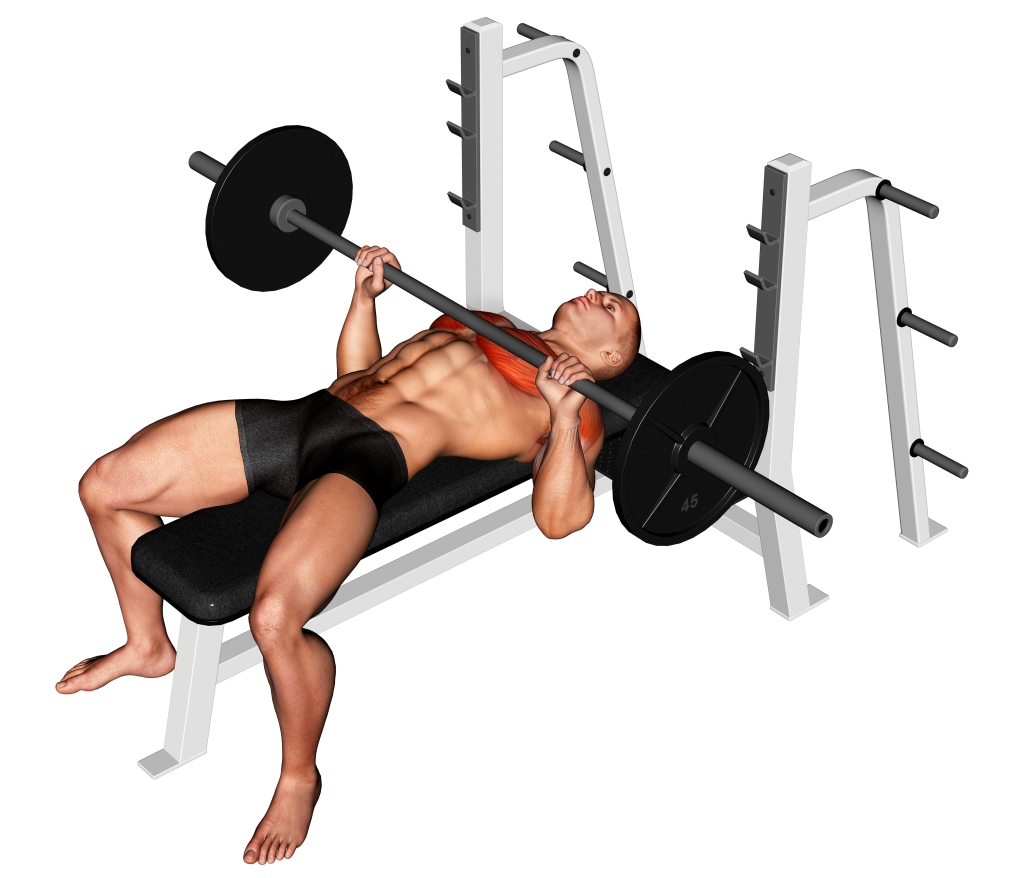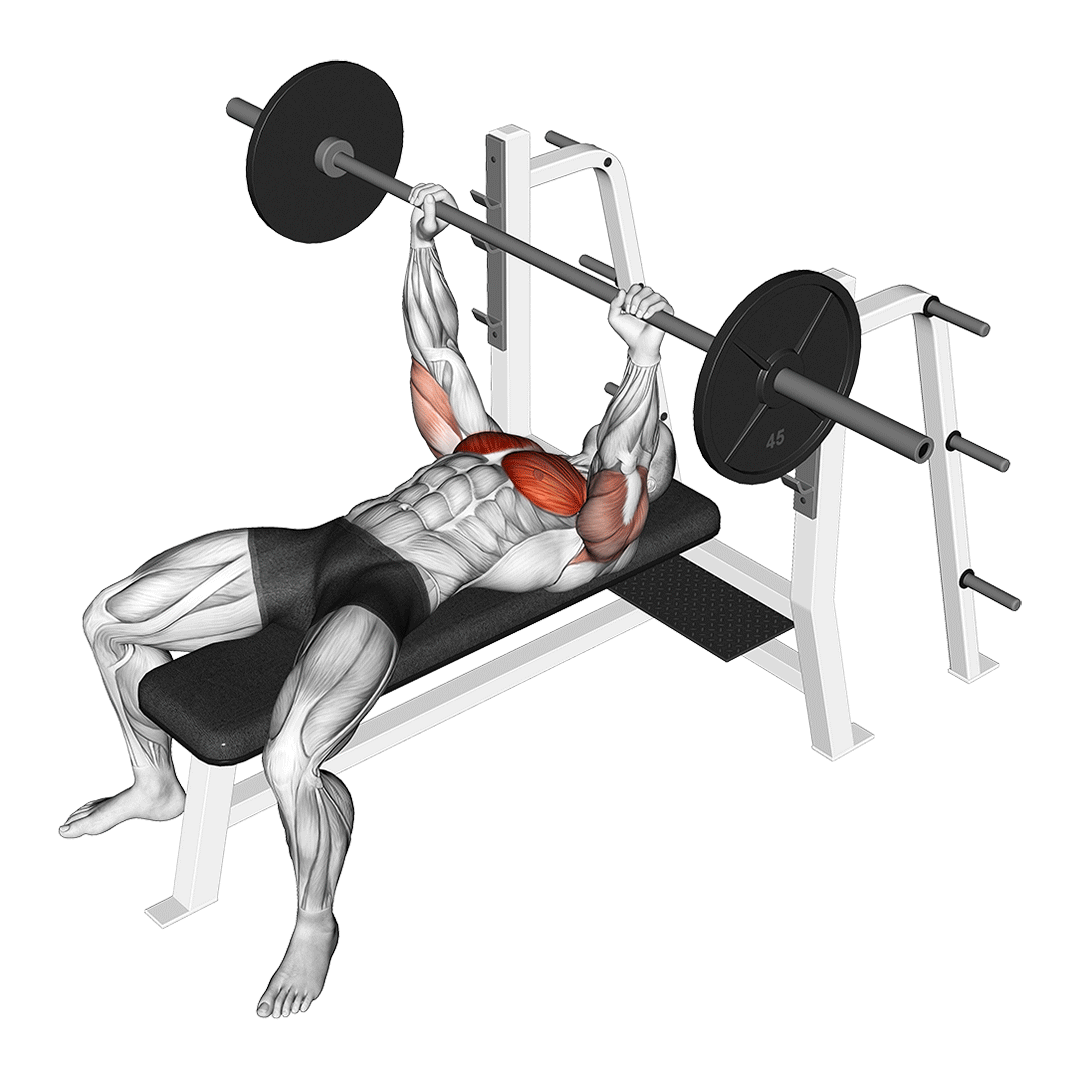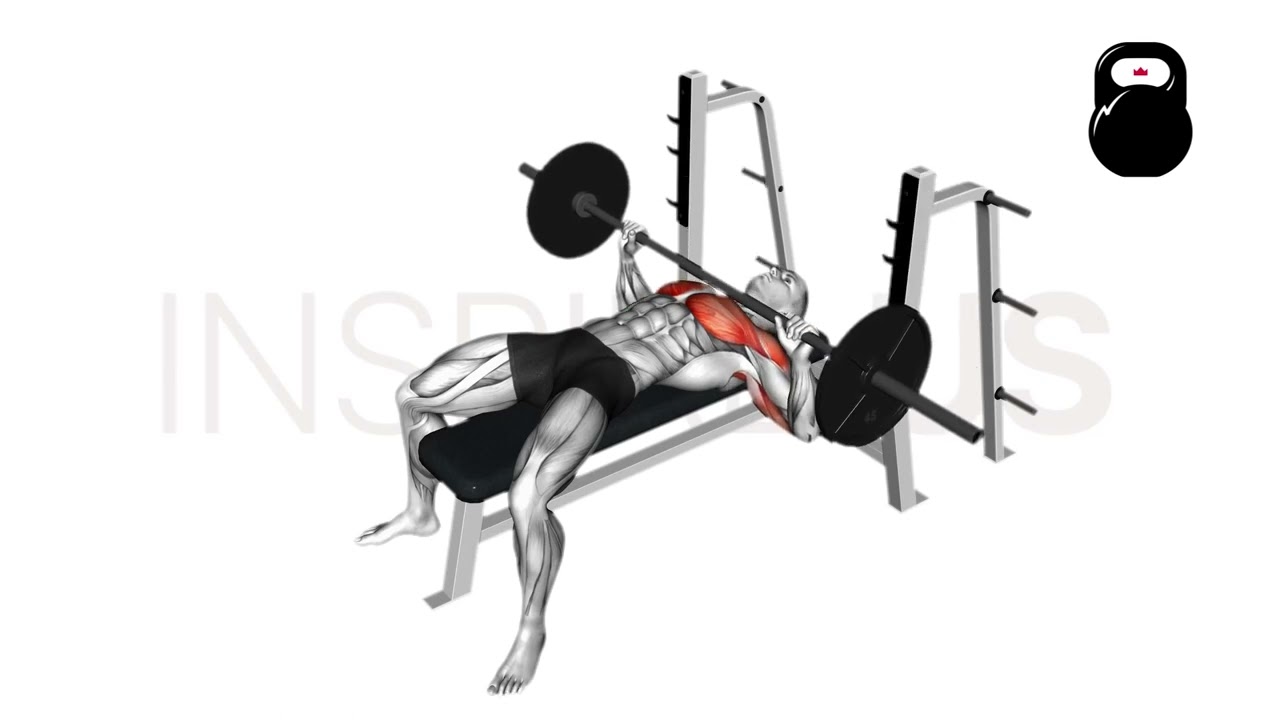Pause Bench Press Exercise Overview: Muscles Worked and More
The pause bench press is an advanced variation of flat bench primarily used for strengthening explosiveness near the bottom range.
In other cases, it is also used to correct issues relating to tempo, bar control or an inconsistent touchpoint.
With such a specific set of use cases, the pause bench press is more often used by powerlifters and similar types of strength athletes for perfecting their competition technique.
Pause Bench Press at a Glance
Equipment Requirements
Bench, Barbell, Weight Plates
Main Muscles Targeted
Pectorals, Triceps Brachii, Anterior Deltoids
Difficulty
Advanced
Sets, Reps, and Load Recommendations
2-3 Sets of 6-10 Repetitions at a Moderate Load
How to Do the Pause Bench Press
- To perform a repetition of the pause bench press, the lifter will begin by following a standard bench press stance.
Scapula depressed and pinned beneath the trunk with the lower back arched, hips against the bench and the hands slightly wider than shoulder-width apart along the bar. - Unracking the bar, the lifter then slowly lowers it until it touches somewhere along their chest - preventing the elbows from flaring out excessively as they do so.
- Once momentum has entirely dissipated and the bar is suspended atop the chest through isometric contraction alone, the lifter counts for several seconds (generally between 1 and 3 seconds) before driving powerfully through their palms.
- This explosive push should rocket the bar upwards, ending with the arms being fully extended and the bar returned to its original position at the start of the movement.
At this point, the repetition is considered complete.
Additional Tips:
Unlike with a conventional touch-and-go bench press, the pause bench press absolutely requires a controlled eccentric - meaning that the bar must slow down as it approaches the chest.
Allowing too much force to distribute into the chest can lead to rib cage damage, and should be avoided as much as possible.
Another good tip to follow is making the distinction between stopping the bar on the chest and stopping it 1-2 inches above. The latter is far less uncomfortable, and allows for greater contraction of the pectoral muscles throughout the pause.
Sets and Reps Recommendation:
Depending on the length of the pause, each repetition may be considerably more taxing than would be the case for a touch-and-go bench press.
Aiming for 2-3 sets of 6-10 repetitions at a moderate load may be ideal, so long as the pause is longer than 1 entire second for each rep.
What Muscles Do Pause Bench Presses Work?
The pause bench press targets much the same muscles as a conventional bench press - those being the deltoids, pectorals and the triceps brachii.

This solidly marks the pause bench press as a compound movement, much like other chest press variants.
Because of the greater isometric demand placed at the bottom of the range, the anterior deltoids and pectorals will be worked comparatively more than is seen with other bench press variants.
Common Pause Bench Press Mistakes to Avoid
To reap the maximum benefits from the pause bench press, avoid the following common mistakes.
Rapid Eccentric Phase
As mentioned previously, the pause bench press should involve a controlled descent of the bar to the chest. Not only does this reduce discomfort and the risk of acute injury, but it also maximizes strength development and technique refinement through a longer time under load.

Lifters should aim to slow the bar to a near complete stop just shy of it touching their chest, squeezing their pectorals and deltoids as they do so.
Excessive or Insufficient Pause
On either end of the spectrum, the pause of the pause bench press can also be detrimental to muscular development.
An exceedingly short pause will - of course - negate the benefits of the pause bench press as it will be too similar to a conventional touch-and-go press.
However, an excessively long pause will fatigue the chest and anterior deltoid muscles needlessly, prioritizing isometric contraction over dynamic contraction.
Unless specifically performing the pause bench press for such a purpose, it is best to keep the pause to a maximum of 3 seconds at most.
Incomplete Range of Motion
With its greater emphasis on the lower half of the bench press’s range of motion, lifters may accidentally fail to complete said ROM when performing a pause bench press.
In most cases, the upper half of the range will not be completed, leading to underworked triceps or poor carryover to actual bench press technique.
Each repetition should be performed as closely as possible to a conventional press - including full extension of the elbows at the start and end of the movement.
Failing to Retract Scapula, Flaring the Elbows or a Flat Lower Back
Of course, apart from those mistakes inherent to the pause variation of bench press, lifters must also follow proper bench press technique in its entirety.
The scapula should remain retracted and depressed against the bench throughout the entire set, ensuring stability of the upper trunk and safe shoulder rotation.
Likewise, the elbows should never flare outwards when pressing the bar, especially if they are drawn parallel to the shoulders. Doing so can lead to impingement and strain on the shoulder girdle.
Finally, the lower back must maintain a small arch so as to better distribute force from the legs and prevent poor curvature of the spine.
Who Should Do the Pause Bench Press?
In truth, the pause bench press is a rather niche exercise more often used as an accessory tool, rather than the main exercise of any strength workout.
Knowing this, the pause bench press should be used by powerlifters or lifters with issues relating to their actual bench press technique. Outside of these populations, the pause bench press is not quite relevant - and may not be the best use of your energy.
For exercises of a similar purpose, the board bench press and pin bench press may also be employed.
References
1. van den Tillaar R, Ettema G. A comparison of muscle activity in concentric and counter movement maximum bench press. J Hum Kinet. 2013 Oct 8;38:63-71. doi: 10.2478/hukin-2013-0046. PMID: 24235985; PMCID: PMC3827767.

